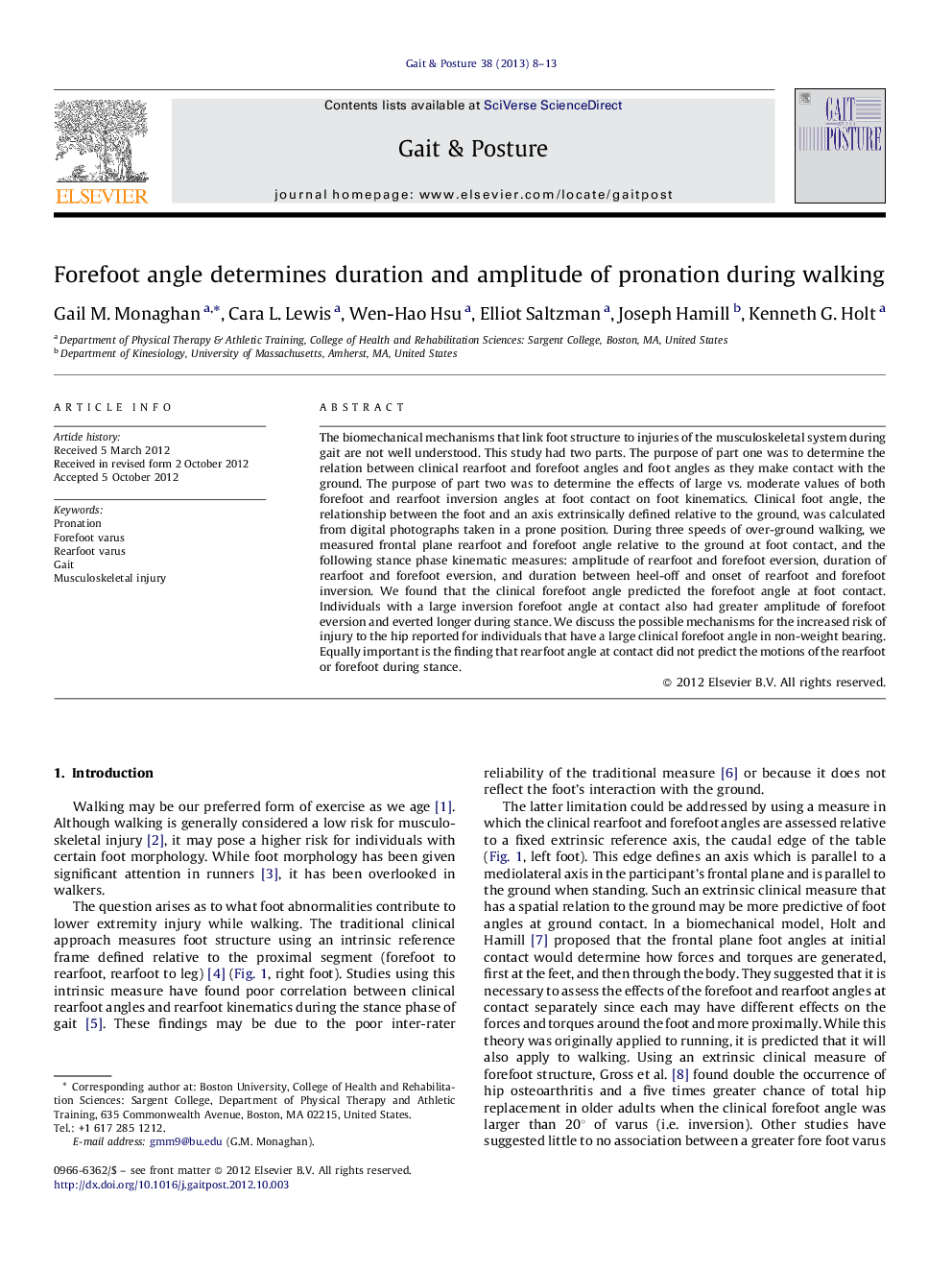| کد مقاله | کد نشریه | سال انتشار | مقاله انگلیسی | نسخه تمام متن |
|---|---|---|---|---|
| 6207482 | 1265662 | 2013 | 6 صفحه PDF | دانلود رایگان |
The biomechanical mechanisms that link foot structure to injuries of the musculoskeletal system during gait are not well understood. This study had two parts. The purpose of part one was to determine the relation between clinical rearfoot and forefoot angles and foot angles as they make contact with the ground. The purpose of part two was to determine the effects of large vs. moderate values of both forefoot and rearfoot inversion angles at foot contact on foot kinematics. Clinical foot angle, the relationship between the foot and an axis extrinsically defined relative to the ground, was calculated from digital photographs taken in a prone position. During three speeds of over-ground walking, we measured frontal plane rearfoot and forefoot angle relative to the ground at foot contact, and the following stance phase kinematic measures: amplitude of rearfoot and forefoot eversion, duration of rearfoot and forefoot eversion, and duration between heel-off and onset of rearfoot and forefoot inversion. We found that the clinical forefoot angle predicted the forefoot angle at foot contact. Individuals with a large inversion forefoot angle at contact also had greater amplitude of forefoot eversion and everted longer during stance. We discuss the possible mechanisms for the increased risk of injury to the hip reported for individuals that have a large clinical forefoot angle in non-weight bearing. Equally important is the finding that rearfoot angle at contact did not predict the motions of the rearfoot or forefoot during stance.
⺠Clinical forefoot angle predicted the forefoot angle at foot contact. ⺠Clinical rearfoot angle did not predict rearfoot angle at foot contact. ⺠Individuals with a large inversion forefoot angle at contact had greater amplitude of forefoot eversion. ⺠Individuals with a large inversion forefoot angle at contact everted longer during stance. ⺠Rearfoot angle at contact did not predict rearfoot kinematics during stance.
Journal: Gait & Posture - Volume 38, Issue 1, May 2013, Pages 8-13
